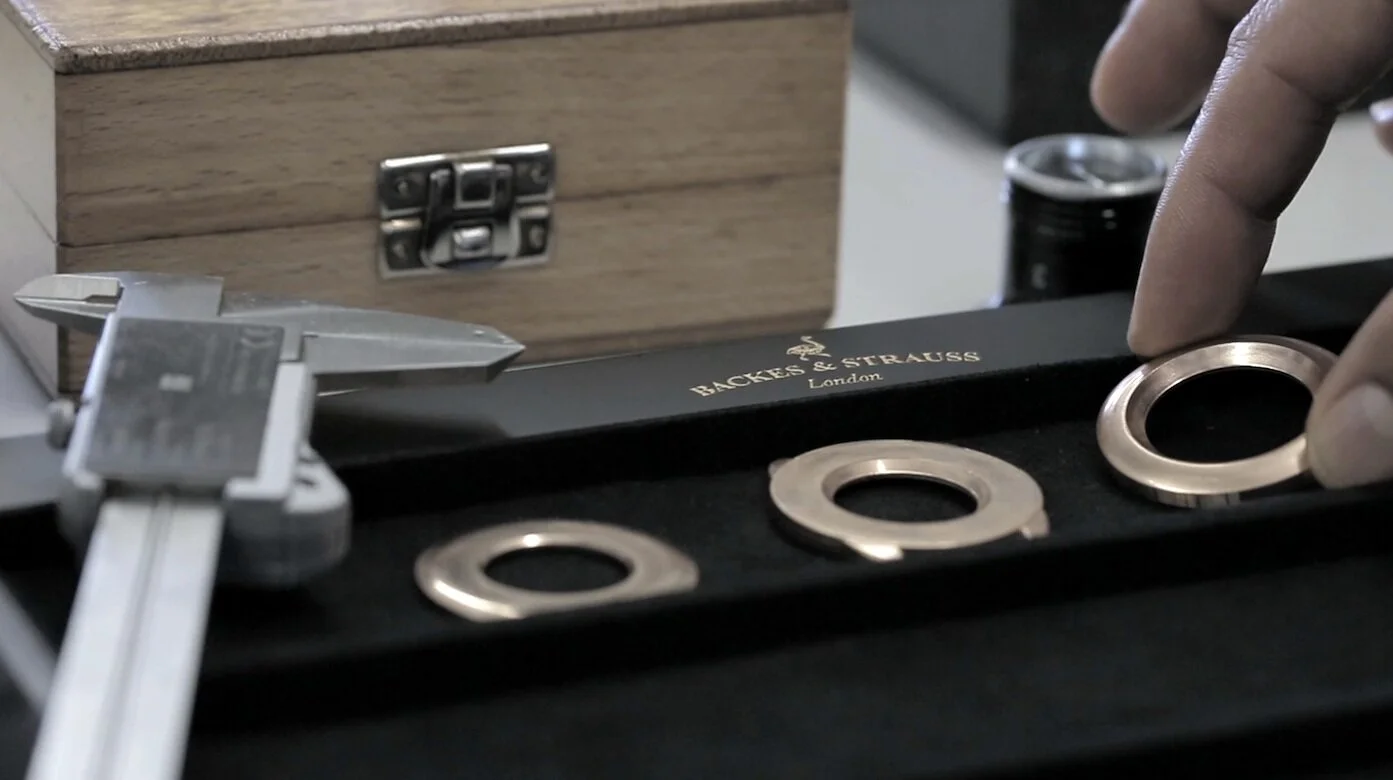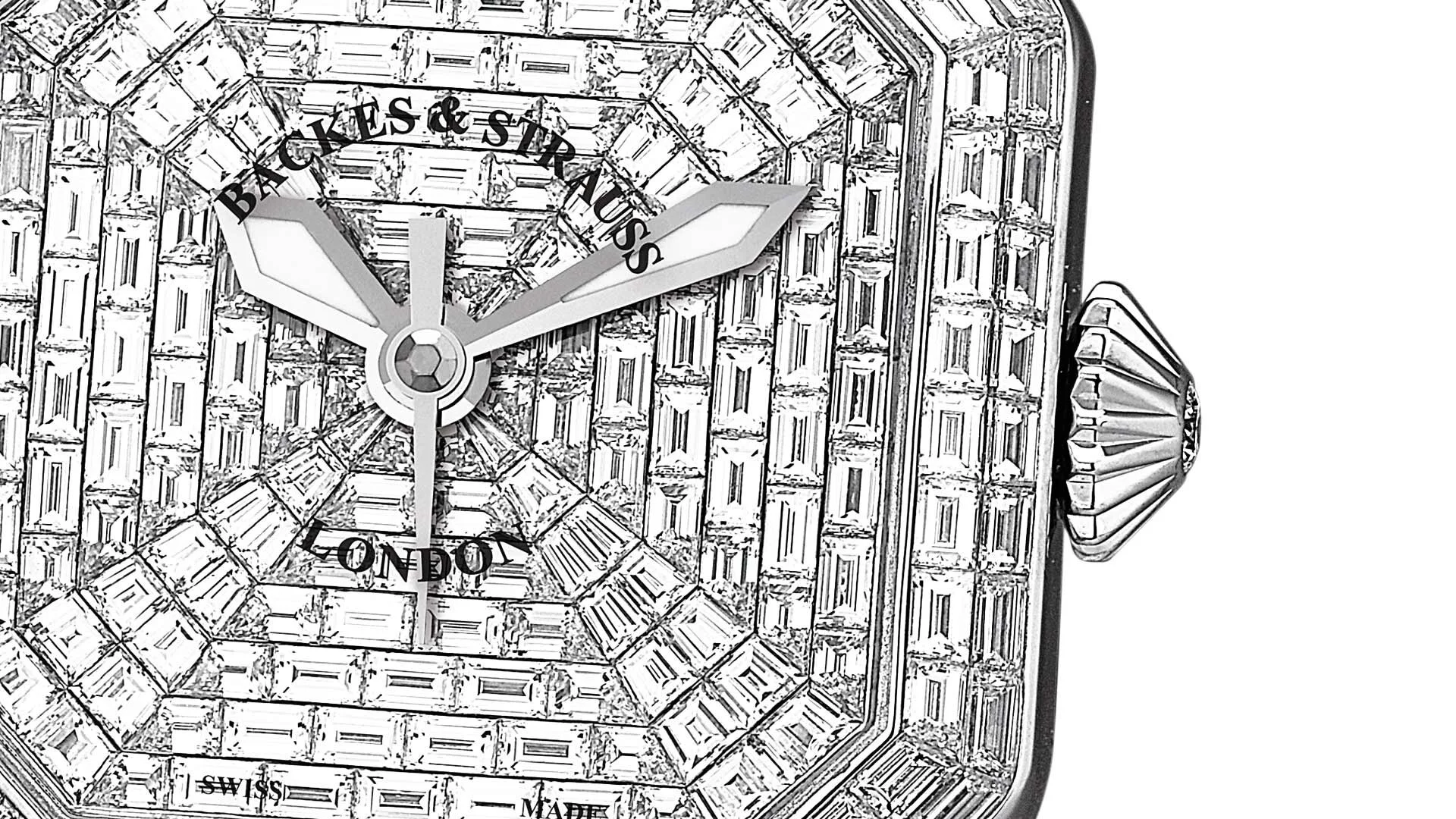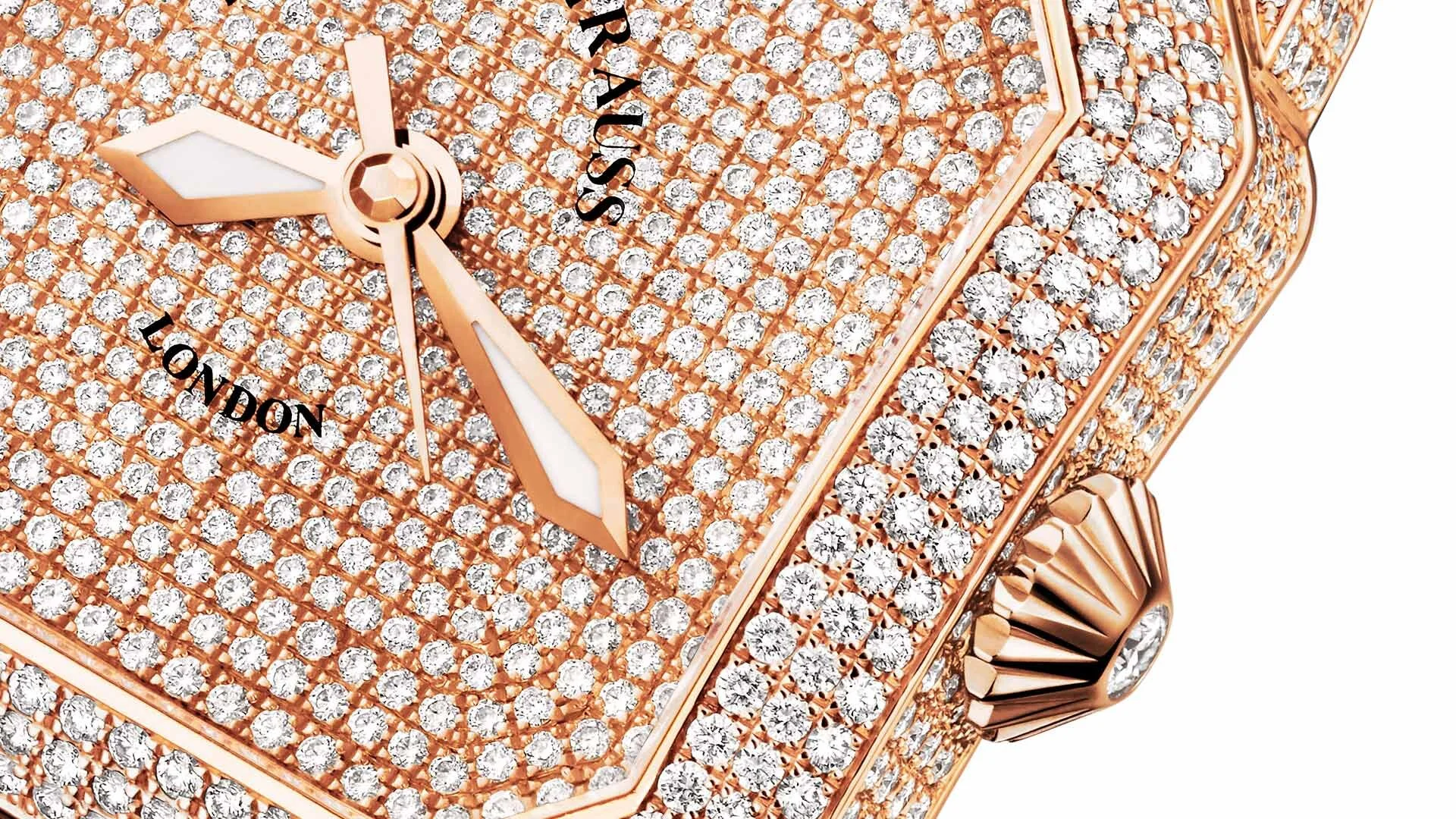Making of the case
The Iconic Cases Take ShaPE
Having discovered the extraordinary and intricate formation of a diamond from carbon to sparkle, we can begin to explore the process behind the exquisite watch cases which are to house the precious stones.
Watch cases start off as a block of metal, be it gold, steel or platinum. They are first stamped to create their general shape and then refined using a CNC 5-axis machine. The machine is programmed to the exact measurements of the case and capable of producing the complex geometrical shapes with utmost precision. This includes the three classic Backes & Strauss shapes – the iconic oval-shaped Regent, square-shaped Berkeley and Piccadilly, the classic round.
Diamond Setting
Before adorning the cases with an array of scintillating 58-faceted ideal-cut diamonds, a process described as mitraillage takes place. It entails drilling the holes that will house the gemstones into the watch case. With immeasurable craftsmanship and patience, a gem setter will then begin the meticulous process of setting the jewels by hand, ensuring the immense brilliance and fire of each individual stone is maximised to its full potential.
Claw setting
Backes & Strauss cases can be fully set, with diamonds in the bezel and lugs. In fact, one of the oldest gem-setting techniques is the serti clos or bezel setting. The technique involves completely encircling the jewel with a thin strip of metal, guaranteeing superior protection and durability. Contrastingly, the serti griffe (claw setting) uses metal claws or prongs, which are curved at the top to hold the stone firmly in place. In this way, more of the diamond is visible, reflecting additional light on the facets and drawing attention away from the metal. The claws, which can be of any width or length, are typically placed at the four corners of the stone, but up to 10 claws may be used on each stone.
Invisible Setting
The invisible setting or serti invisible is a truly magical technique. It entails creating tiny grooves in the lower part of the gemstone, in such a way that the gems slip effortlessly into an extremely thin metal rail. From above, the presence of neither the rails, nor the metal can be perceived. Solely an uninterrupted surface of scintillating jewels meets the eye, creating the stunning illusion of one, much larger diamond.
Pave Setting
A more robust technique, the grave or pave setting (serti grain ou pavé) features many smaller and rounder diamonds of identical sizes and dimensions, set very closely together. The stones are held in place by metal beads, which are created when a craftsman engraves, raises and rounds the surrounding metal. In doing so, a beautiful beaded or cobbled effect is established, making it appear as though there is an endless sea of sparkle.
Snow setting
One of the more complex gem-setting techniques is the serti neige or snow setting. As the name alludes, the technique mimics the beauty of fallen snow and is based solely on the creative impulses of the setter, who sets varying sized diamonds in a seamlessly unique arrangement, concealing as much of the underlying metal as possible. The stones are thereafter encased with a thin strip of metal to secure them firmly in place.
The Final Touches
With the gemstones now set in place, the cases are polished to an impeccable finish, and the case backs of the pieces are ready to be engraved by laser with the name and logo of the brand, model reference and serial number. Various obligatory hallmarks are also affixed to each piece by hand, including the material of the case, where the number 750 represents gold and 950, platinum. The case also features the hallmark of the poinçon de maitre (case maker) and all watch cases made from gold, silver, platinum or palladium in Switzerland must bear the hallmark of a St. Bernard Dog’s head.
Epitomising the finest craftsmanship, the exquisite Backes & Strauss cases are now complete, and the watchmaking process can continue onto the intricate mechanism that symbolises the heart of the timepiece, the Watch Movement.






